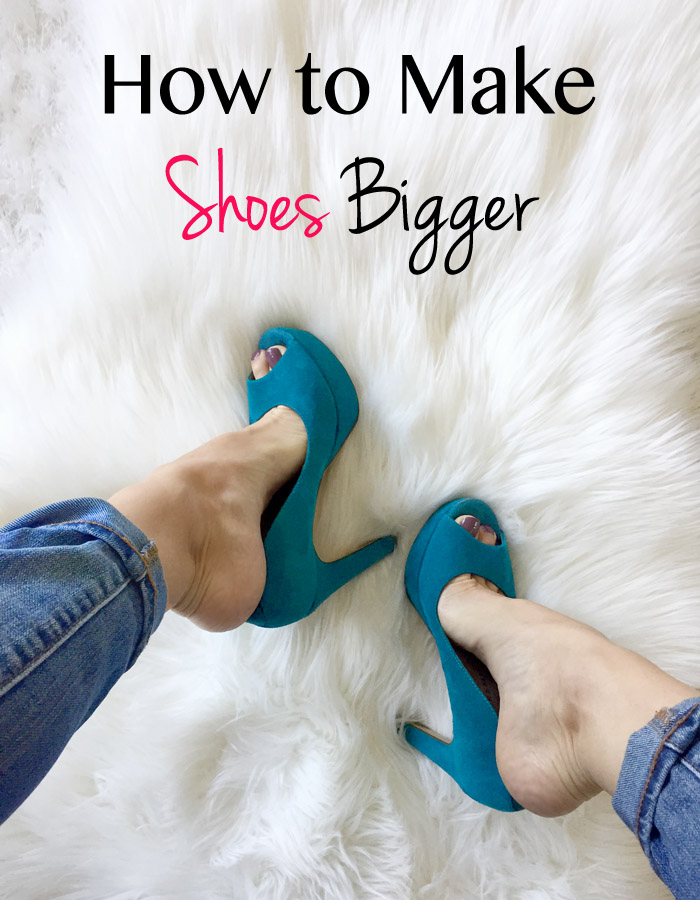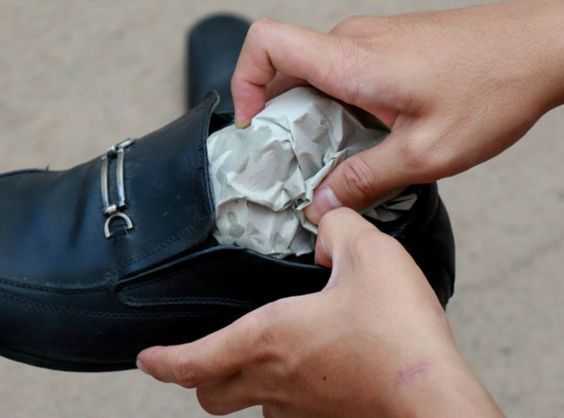If you’ve ever purchased a pair of shoes that felt just a tad too tight, you’re not alone! Many shoe enthusiasts, fashion lovers, and professionals face the challenge of snug footwear. While shoe stretchers are a popular option, there are numerous practical and resourceful methods to stretch shoes without one. In this comprehensive guide, we’ll explore effective techniques, real-world experiences, and helpful tips to ensure your shoes fit comfortably.
Understanding Shoe Materials
Before diving into the methods of stretching shoes, it’s crucial to understand the types of materials used in footwear. Different materials respond uniquely to stretching techniques, making it essential to tailor your approach according to the shoe’s composition.
Common Shoe Materials
- Leather: Durable and flexible, leather can stretch significantly when exposed to heat or moisture.
- Canvas: A lightweight fabric that stretches easily, making it ideal for various methods.
- Synthetic Fabrics: These materials can be somewhat resistant to stretching, requiring more effort.

Why Stretch Your Shoes?
Uncomfortable shoes can lead to a host of issues, including blisters, calluses, and even long-term foot problems. Stretching your shoes can enhance comfort, improve circulation, and ultimately extend the lifespan of your footwear. For example, a fashion enthusiast may find that a pair of stylish heels pinches their toes, while a professional might experience discomfort in dress shoes during long hours at the office. Stretching these shoes can alleviate pain and enhance wearability.

Methods to Stretch Shoes Without a Shoe Stretcher
Now that we’ve set the stage, let’s explore effective methods for stretching shoes without a shoe stretcher. Each method comes with its pros and cons, so choose one that best suits your needs!

Method 1: Wear Them with Thick Socks
This method is probably the simplest way to stretch shoes. Here’s how it works:

- Put on a pair of thick socks.
- Slip on your shoes, ensuring they are snug but not painful.
- Walk around in them for 30 minutes to an hour. The heat and pressure from your feet will enable the shoes to stretch gradually.
Pros and Cons
| Pros | Cons |
|---|---|
| Simple and effective for many shoe types. | May take time to achieve desired results. |
| Affordable – no special tools needed! | May not work on stubborn materials. |

Method 2: Use Heat to Stretch Shoes
Heat is an effective way to stretch shoes, especially leather. Here’s how to do it safely:

- Put on a pair of thick socks and your shoes.
- Use a hairdryer on a low setting, directing the heat to the tight areas of the shoe for about 30 seconds.
- Keep walking in the shoes until they cool down, allowing them to mold to your feet.
Important Note:
Be cautious not to overheat the material, as this can damage the shoes. Leather may crack if exposed to excessive heat.

Pros and Cons
| Pros | Cons |
|---|---|
| Very effective for leather shoes. | Risk of damaging shoes if not done correctly. |
| Quick results; noticeable difference after one use. | Requires equipment – a hairdryer. |
Method 3: Moisture and Freezing

This technique is perfect for canvas shoes and even for certain synthetic options. Here’s how to get it done:
- Fill two zip-lock bags with water and seal them tightly.
- Place the bags inside the shoes, ensuring they fill any tight areas.
- Put the shoes in the freezer overnight. As the water freezes, it will expand and stretch your shoes.
Tips for Success
- Ensure the bags are completely sealed to avoid water damage.
- Allow the shoes to thaw for a bit before removing the bags to avoid any risk of tearing.
Pros and Cons
| Pros | Cons |
|---|---|
| Effective for tight spots in shoes. | Not suitable for all shoe types (avoid delicate fabrics). |
| Easy to do with minimal supplies. | Requires a waiting period for freezing. |
Method 4: Professional Sprays and Solutions
Another effective option is using professional shoe stretchers sprays available in the market. Here’s how to use them:
- Spray the solution on the tight areas of the shoes.
- Put on your shoes with thick socks and walk around.
- Allow the shoes to dry while on your feet.
Recommended Products
Pros and Cons
| Pros | Cons |
|---|---|
| Specifically designed for shoe stretching. | Can be expensive compared to other methods. |
| Typically results in a softer, more comfortable fit. | Requires purchase of a product. |
Method 5: Using a Damp Cloth
This method is quite straightforward and can be very effective, especially for fabric shoes. Here’s how to do it:
- Dampen a cloth with water (not soaking wet).
- Wrap the cloth around the tight areas of your shoes.
- Wear the shoes while the cloth is wrapped around until it dries.
Pros and Cons
| Pros | Cons |
|---|---|
| A gentle method suitable for most materials. | Results may vary depending on material. |
| No need for specialized tools. Just a cloth! | Longer time may be needed to see results. |
Real-World Experiences and Case Studies
Let’s take a look at a couple of real-world experiences to illustrate how these methods can be successfully implemented.
Case Study 1: Lisa and Her New Heels
Lisa purchased a stunning pair of heels for a wedding but soon realized they were a size too small. Instead of returning them, she decided to try the thick sock method. After wearing the shoes for just an hour with thick socks, she noticed a significant difference. The shoes were now much more comfortable, allowing her to dance the night away!
Case Study 2: Mark’s Hiking Boots
Mark bought a new pair of hiking boots that were a bit tight around his toes. Using the freezing method with zip-lock bags filled with water, he successfully stretched the shoes overnight. The next day, he went for a hike and found that the boots fit perfectly, proving that a little creativity can save the day!
Tips for Maintaining Stretch in Your Shoes
After you’ve successfully stretched your shoes, you’ll want to maintain that comfort. Here are some useful tips:
- Use shoe trees: Inserting shoe trees after wearing your shoes can help maintain their shape and prevent them from tightening again.
- Rotate your shoes: Avoid wearing the same shoes every day to reduce wear and return them to their original shape.
- Regular cleaning: Keeping your shoes clean can help maintain their material integrity and prevent them from getting stiff.
Frequently Asked Questions (FAQs)
1. Can all shoes be stretched?
Not all shoes will respond the same way to stretching methods. Leather and canvas tend to stretch well, while synthetic materials may be more resistant.
2. How much can I stretch my shoes?
Most methods can increase your shoe’s size by half a size to a full size. However, results can vary based on the shoe’s material.
3. How long do the effects of stretching last?
The effects of stretching can last for a significant amount of time, but with regular wear, shoes may return to their original tightness. Regular maintenance can help preserve the stretch.
4. Is it safe to use heat on shoes?
Yes, using heat is safe as long as you monitor the temperature and avoid overheating the material, leading to damage.
5. Can I use these methods on suede shoes?
Yes, many of these techniques can work for suede but take extra care as suede can be delicate and easily damaged.
6. How can I prevent blisters from tight shoes?
In addition to stretching, consider using blister prevention pads or wearing thicker socks until the shoes loosen a bit.
7. Will these methods work on high heels?
Yes, you can use these methods for high heels, particularly those made of leather or suede. Proceed with caution to avoid damaging delicate materials.
8. How do I know if my shoes are too tight?
Common signs include pinching in the toe area, blister formation, or discomfort after short periods of wear.
9. Can I stretch shoes that have already started to hurt my feet?
Yes, most stretching methods can still work on shoes that have caused discomfort. However, immediate relief may not be experienced, and you may need to wear them for a while after stretching.
10. What if my shoes are too big instead of too tight?
If your shoes are too big, consider using insoles or heel grips for a better fit, as stretching won’t solve this issue.
11. Can I return stretched shoes to the store?
Typically, shoes that have been altered (including stretching) may not be eligible for return. It’s best to check the store’s return policy.
Conclusion
Stretching your shoes without a shoe stretcher is entirely achievable with some creativity and the right methods. Whether it’s your favorite heels or comfortable sneakers, a snug fit doesn’t have to ruin your day. By utilizing techniques such as wearing thick socks, applying heat, or using moisture, you’ll ensure that your shoes feel fantastic. Remember to maintain your shoes post-stretching to prolong their comfort, and don’t hesitate to experiment with different methods based on your shoe type.
With these tips in hand, you can confidently take the next step in making your footwear as comfortable as possible. So go ahead, get those shoes moving, and dance through life without discomfort!